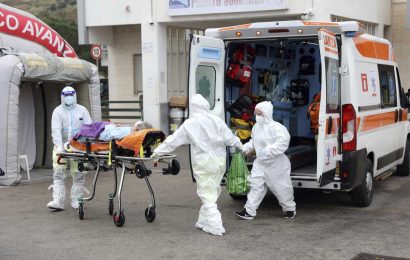SAN ANTONIO — Monitoring daily step counts in addition to clinical features can predict ― and may help to prevent ― hospitalization for acute events in patients with cancer who are undergoing chemoradotherapy (CRT), suggest researchers.
Analysis of the step count data from a wearable device was shown to predict which patients were likely be hospitalized during the following week.
“If you can anticipate a patient’s risk of unplanned hospitalization, you can change how you support them through their cancer treatments and reduce the likelihood that they will end up in the ED or hospital,” commented senior author Julian Hong, MD, assistant professor of radiation oncology and computational health sciences at the University of California, San Francisco (UCSF).
The research was presented here at the American Society for Radiation Oncology (ASTRO) 2022 Annual Meeting on October 24.
“As more people begin to use wearables, the question of whether the data they are collecting could be useful arises,” said study presenter Izzy Friesner, BA, a clinical data scientist at UCSF.
“Our study shows there is value in having our patients collect their own health data during their everyday lives and that we can use this data to then monitor and predict their health status,” she said in a stament.
The advantage of using data from a patient’s own device is that the device can be used outside of a clinical setting, when the person is at home or going about their daily life. However, “one of the challenges when working with real-world wearable data are the economic and racial disparities that impact who owns [such] devices,” she added.
Study Details
For the study, the team gathered data on 124 patients with cancer who were undergoing CRT in three prospective clinical trials (NCT02649569, NCT03102229, and NCT03115398) conducted by Nitin Ohri, MD, Montefiore Medical Center in New York City, and colleagues.
These patients had a range of cancers, including head and neck cancer (30%) and lung tumors (29%), and they wore fitness trackers that monitored their activity over several weeks.
The team randomly assigned 70% of patients to a training set and the remaining 30% to a hold-out test set. They collected information on potential predictors of an acute event, such as age, ECOG performance status, cancer site, and clinical features, alongside numerous step count metrics.
After smoothing out the “noisy” daily step count data as 3-day averages, they identified a prediction window of 1 week before the first hospitalization, and then gathered step count data for the 2 weeks prior to the 1-week prediction day.
To analyze the data, they used elastic net-regularized logistic regression, a random forest analysis, and a sparse-input neural network.
On a first hospitalization event rate of 27% during CRT, the team found that the elastic net model performed best. It strongly predicted hospitalization over the following week. For this finding, the area under the receiver operating characteristic curve (AUC) was 0.80, which was significantly higher than the AUC of 0.46 (P < .001) when restricting the model simply to clinical characteristics.
“The step counts immediately preceding the prediction window ended up being generally more predictive than clinical variables,” said study co-author Julian Hong, MD, an assistant professor of radiation oncology and computational health sciences at UCSF.
“The dynamic nature of the step counts, the fact that they’re changing every day, seems to make them a particularly good indicator of a patient’s health status,” he added.
The features most predictive of a hospitalization were the adjusted step count in the previous 2 days and the relative change in the weekly maximum step count, followed by a diagnosis of cervical cancer.
The model that the team developed will now be tested in an upcoming trial, NRGF-001, which will randomly assign patients undergoing CRT for lung cancer to treatment with or without daily step count monitoring
Friesner has disclosed no relevant financial relationships. Hong has received reserach grants from ASTRO and several cancer foundations and patent/license fees from Duke University.
American Society for Radiation Oncology (ASTRO) 2022 Annual Meeting: Abstract 132. Presented October 24, 2022.
For more news, follow Medscape on Facebook, Twitter, Instagram, and YouTube.
Source: Read Full Article


